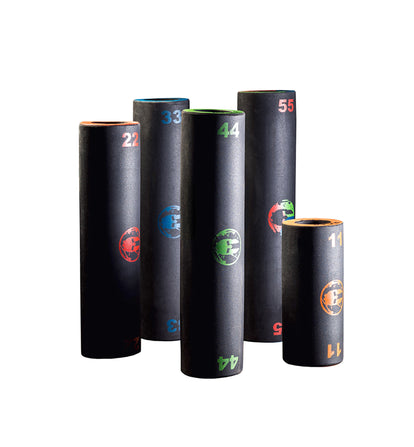3 Foam Rolling Techniques That Will Help You Sleep Better

The relationship between exercise and better sleep is well known. For the 70 million Americans who suffer annually from some kind of sleep disorder, medical experts routinely suggest regular exercise as a remedy for more quality sleep.
But recent studies have shown that it’s not just aerobic exercise that’ll create more restful sleep. In fact, muscle-strengthening movement is the most effective medium when it comes to inducing a good night’s sleep.
In one study carried out in Germany, researchers examined the exercise and sleep habits of 23,000 adults. They discovered that participants who included any muscle-strengthening training during regular workouts slept better than those who didn’t. Additionally, the rise in sleep quality wasn’t “dose-dependent.” In other words, more was not necessarily better, as those who included resistance training once during their weekly workouts slept just as well as those who ticked off two, three, or more muscle-strengthening sessions per week.
Related: 10 Ways to Stop Sabotaging Your Sleep Hygiene
This is significant, according to the study’s co-author, Jason Bennie, Ph.D., an associate professor in physical activity epidemiology at the University of Southern Queensland. With less than 60% of the sample reporting no muscle-strengthening exercise as part of their regular workouts, he claims it indicates that "small-to-moderate increases in muscle-strengthening exercise at the population-level may be an important lifestyle modification among those who routinely experience poor-quality sleep.”
Stretching and Strengthening for Better Sleep

A further study published in the Brazilian Journal of Psychiatry revealed positive effects of stretching and resistance training on sleep, mood, and quality of life in chronic insomnia patients.
Related: This Is Why Muscle Recovery Is More Important Than Training
These muscle-induced movements increase the body’s use of adenosine, a chemical found in human cells that causes drowsiness. (This is also why you often feel wiped out after a workout.) And, of course, strength training has also been shown to reduce stress and improve poor digestion — both of which are contributing factors to substandard sleep.
How Foam Rolling Can Improve Sleep Quality
Also known as foam rolling, self-myofascial release (SMR) effectively involves rolling out your muscles with a piece of hard foam.
"SMR, or foam rolling, can be a great way to relieve muscle tension and relax the body prior to sleeping," Seattle-based Spartan SGX Coach Chris Travis says. "If you are sore from a workout or feel muscle tightness or discomfort due to stress or sitting for long periods of time, foam rolling can be a good way to care for and relax your body before settling in for the night.”
Related: 6 Essential RAMRoller Exercises to Build Total-Body Strength
But it’s not just the fact that foam rolling loosens up both the muscle tissue and the fascia around it that makes it a great pre-bed activity. According to a recent study carried out by Uppsala University in Sweden, activities like SMR increase blood concentrations of crucial molecules such as BDNF and IL-6, which then stimulate the production of sleep-promoting factors in skeletal muscle.
Muscle-Moving Foam Rolling Exercises
But what exact muscle-moving exercises should you add to your training to ensure that you're getting the most out of every sleep session?
Incorporating free weights, resistance band exercises, and bodyweight workouts will all help. And according to Travis, you can keep it simple with foam rolling if you’re just starting out, while still seeing the effects.
Here's are three simple foam rolling exercises that he suggests.
SMR Exercise 1: Upper Back
“This targets the large layers of muscle on either side of your spine,” Travis explains.
- Start with the foam roller positioned just underneath the shoulder blades on your upper back.
- Lift your butt off of the ground and your body onto the roller while putting your hands behind your head.
- Slowly roll up and down the spine, only going as far down as the mid-back.
- As you get to the shoulder blades, bring your elbows closer together. This will help target the lower trapezius and rhomboids.
SMR Exercise 2: Glutes
Specifically, this will target the gluteus maximus and the hip rotators (like the piriformis).
- Start by sitting on the roller and tilting to one side.
- Cross the top leg over the planted one (opposite to the side you are tilting) and roll.
- Switch sides.
SMR Exercise 3: Posterior Shoulder
This will target the latissimus dorsi and the rotator cuff muscles.
- Lie on your side with your arm over the roller (sitting in the armpit).
- Move slightly side to side while rolling face down and then back to face up.
For those who are new to foam rolling, Travis suggests starting with a soft foam roller.
"As your body becomes more acclimated to foam rolling, you can move to a firmer roller,” he says. “A general rule is to roll each muscle group for about 30 seconds. If you find an area that is particularly tender, stop and sit on the area for a few seconds to apply direct pressure.”

